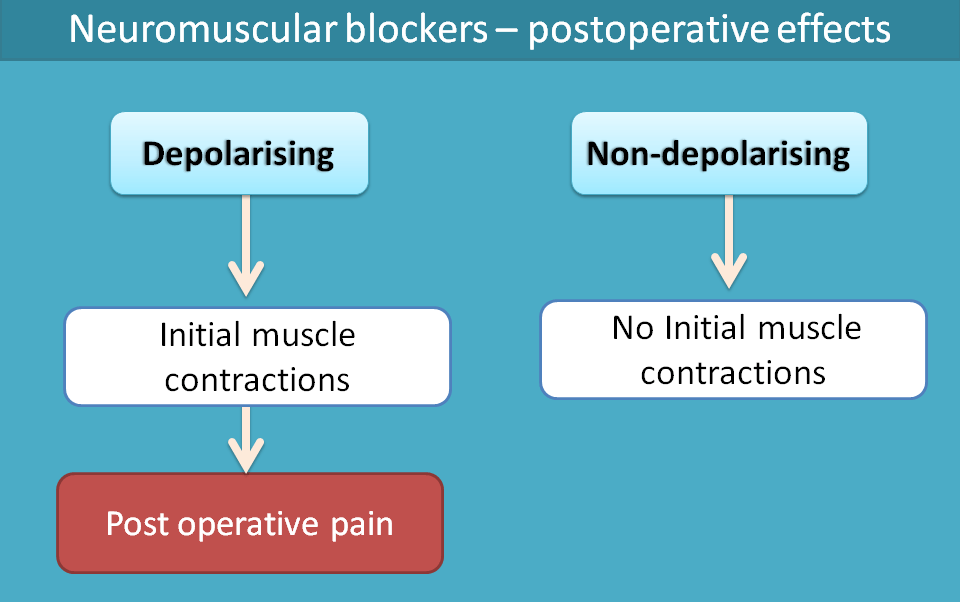Neuromuscular blockers
These drugs act at nicotinic acetylcholine receptors at neuromuscular junction and produce muscle paralysis. Again, based on the mode of action they can be classified into two types
- Depolarising neuromuscular blockers
- Non-depolarising neuromuscular blockers
Can depolarisation produce a block?
It is well known fact that, depolarisation in a skeletal muscle always leads to contraction, but how it produces muscular block and relaxation?
The simple answer is that depolarisation is not for short period but it is persistent.Let’s have an illustration for more clarity.
Similarly depolarising neuromuscular blockers initially produce contraction but later they produce relaxation due to persistent depolarisation by which sodium channels are in still inactivated and hence closed. At the same time, the receptor is also desensitized so that cannot be activated by acetylcholine.
Depolarising vs non-depolarising neuromuscular blockers
Let’s explore how these two categories are different in their actions based on the following parameters.
- Nature of interaction
- Type of block
- Reversal of block
- Post surgical effects
- Side effect profile
Nature of interaction
The first difference in these two categories is their nature of interaction with nicotinic acetylcholine receptors at neuromuscular junction.

Depolarising neuromuscular blockers act as agonists while non-depolarising neuromuscular blockers act as antagonists.
Type of block
Non-depolarising drugs are competitive and their block can be reversed by increasing acetylcholine levels at synaptic cleft.

On the other hand, depolarising blockers act just like acetylcholine and produce persistent depolarisation followed by relaxation.
Reversal of block
As we have seen above that non-depolarising drugs are competitive in nature, the block produced by these drugs can be easily reversed by drugs increasing acetylcholine levels at synaptic cleft. Acetylcholinesterase inhibitors are such category of drugs that increase acetylcholine levels reversing the block.

Depolarising neuromuscular blockers show complete opposite response. The block produced by these drugs is further increased by ACh esterase inhibitors.
Since ACh esterase inhibitors increase acetylcholine levels which also produce depolarisation increasing the block produced by depolarising neuromuscular blockers.
Post-surgical effects
Depolarising neuromuscular blockers produce initial muscle contractions followed by relaxation. Hence they produce
- Postoperative muscle pain
- Hyperkalemia
- Hyperthermia

These effects are not observed with non-depolarising neuromuscular blockers as they simply antagonise but don’t produce any contractions.
Side effect profile
All these drugs are not completely selective for nicotinic receptors but show a little action at muscarinic receptors particularly at heart.

As depolarising neuromuscular blockers act as agonists they produce bradycardia while non-depolarising produce tachycardia.